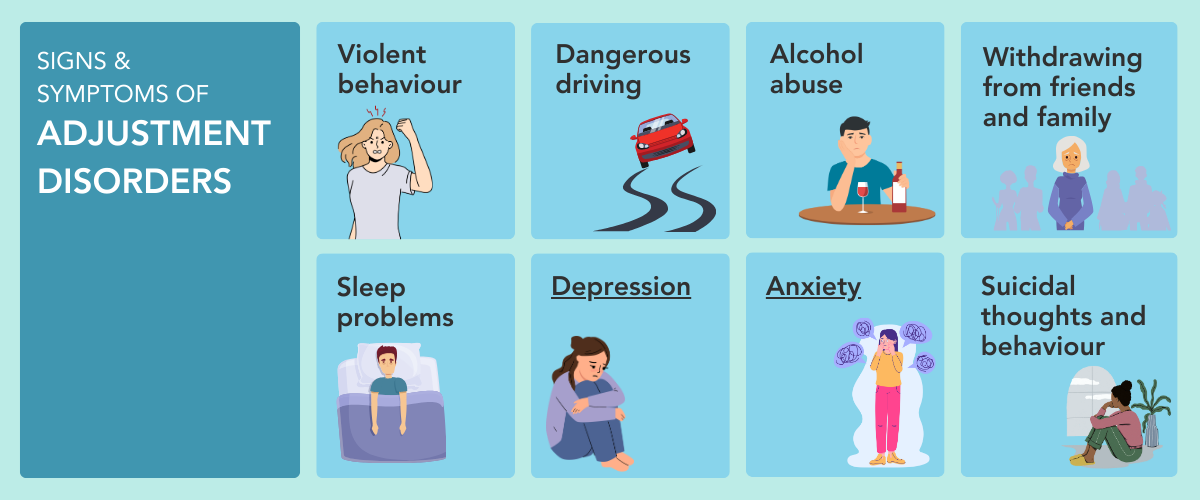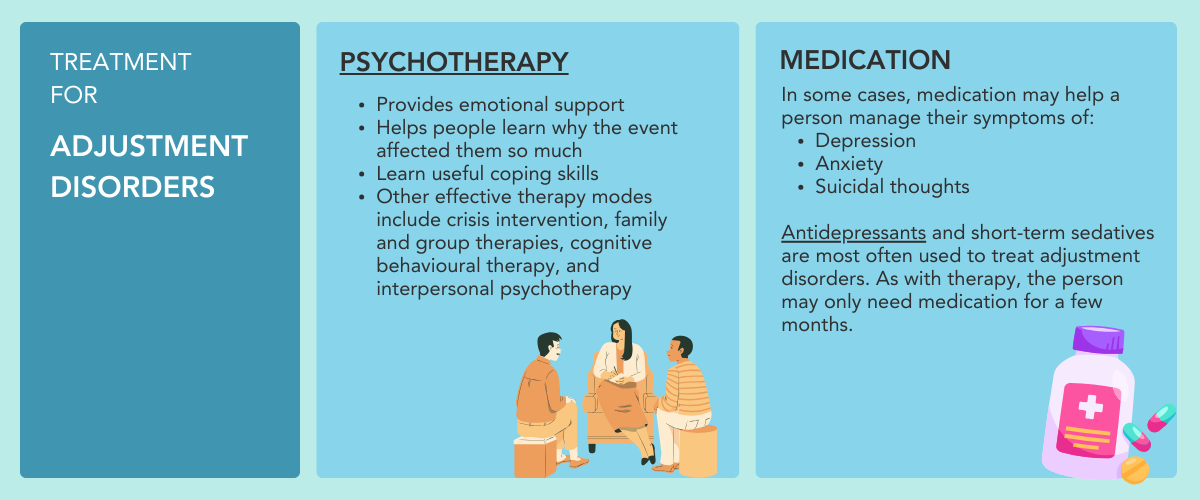Adjustment disorders may take up to three months to show up after a stressor occurs. The symptoms can vary considerably, usually appearing as depressive or anxiety symptoms, and sometimes even both. Physical changes in behaviour are most common in children and the elderly, but this can happen in any age group.
The affected person may display the following signs:

These signs may persist for more than six months if there is a chronic stressor or long-lasting consequences.
There are two main types of treatment for adjustment disorders – psychotherapy and medication. Most people improve after treatment and only need it for a short while.

Adjustment disorder happens when a stressor overwhelms a person’s ability to cope. As people receive the right support and learn effective skills, recovery is possible.
To make an appointment to see a doctor, please call 6389 2200.